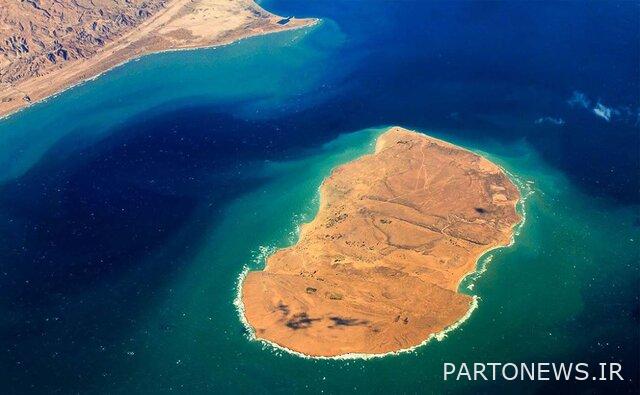Iran’s long-standing rule over the three islands

A foreign policy researcher emphasized: The old documents about the three islands of “Abu Mosi”, “Tenb Bozor” and “Tenb Kochuk” acknowledge Iran’s sovereignty over these islands. According to Isna, citing the public relations of the historical cultural complex of Niavaran, the meeting of “the most Iranian Islands”, following the recent statement by Saudi Arabia and China about the right of ownership over the three islands of Iran, focusing on the three islands of Abu Musa, Tunb Bozor and Tunb Kokos, with the presence of Korosh Ahmadi – foreign policy researcher and former diplomat -, Alireza Rafti – author of the book “Iran Arrasedeh” Emirates – and Bijan Moghadam – Director of Niavaran Collection was held in Niavaran Cultural and Historical Complex.
Korosh Ahmadi, a foreign policy researcher, said in this meeting: The historical history of the three islands of Abu Musa, Big Tunb and Small Tunb has been one of the conflicts of the last 50 years in Iran. Because it has a great geopolitical position and the deepest water is in this area. The 9th of December 1400 was the 50th anniversary of the presence of Iranian forces in these islands and the restoration of Iran’s sovereignty over these islands and the last day when the treaties that England had with the sheikhs of the Persian Gulf countries were terminated, and since the beginning of December last year, the countries under the rule of these sheikhs They no longer have any official security and protection ties with England and were left to themselves.
Ahmadi continued: Since 1820, the British have attacked the sheikhs of the south of the Persian Gulf who were committing piracy and causing disturbance to commercial ships and destroyed their facilities and conquered the Persian Gulf and Ras Al Khaimah. Also, a number of forces in Qeshm disembarked and from here the conflict between Iran and England over the islands of the Persian Gulf began. Iran’s protest and the illness of the British forces caused the evacuation of Qeshm, but the British kept Buseed, which is located in the westernmost point of Qeshm, and used it as a coal station. This region was under the rule of Iran for periods and was occupied by Bahrain for periods. The Persian Gulf has always been coveted by great powers because of the oil in it.
This former diplomat of our country went on to say: After the Safavid, Zandiyeh and Afshariya eras, due to the chaos inside, Iran could not maintain its sovereignty over Bahrain, so a tribe from within took over its sovereignty. In the 1820s, a negotiation between the British representative in the Persian Gulf and the ruler of Persia was carried out and it was agreed that Bahrain would belong to Iran, but London did not accept and the matter was abandoned.
Ahmadi added: There was a conflict between the global powers dominating the Persian Gulf and Iran, and on the other hand, the British policy was to contain Iran as a regional power, therefore, the British supported small local units such as the Sheikhs of the Emirates, Qatar, Bahrain, and Kuwait. It was filled to stand against Iran.
He stated: England signed three treaties with the sheikhs of the Persian Gulf, the first of which was signed in 1820, in which war between the sheikhs was prohibited and England was introduced as the ruler. At the turn of the 18th to the 19th and 20th centuries and due to international developments and the increase in colonial rivalries and existing threats due to British domination over the Persian Gulf on the one hand and the British desire to control the strategic way to reach the Indian subcontinent on the other hand, England first acquired the islands located in Strait of Hormuz, like Lark, took control of Qeshm and Hengama and informed Shiukhi that these islands belonged to them, but when this plan was not possible, he focused on the islands at the exit of the Strait of Hormuz, including Abu Musi, Big and Small Tunb.
This researcher said: “England works exceptionally well when it comes to keeping documents, and in the existing documents published by them, which have been published in the form of books, Iran’s sovereignty over these three islands has been acknowledged time and time again in different eras.” Regarding the three islands, there are legal issues that must be pursued through legal means and at the international level, and the existing documents must also be published at the international level to be seen.
In the continuation of this meeting, Alireza Rafti – researcher and author of the book “Iran Has Not Reached the Emirates” – reminded: This book is my travelogue to Bomosi (which is called “Abomosi” in the official literature) along with the review of letters and witnesses about this island. Contrary to what is thought, Abu Musa is not a military island and entering it is very simple and possible only by contacting the governor, and this island has the ability to become a tourist area with the existing capacities.
Rafti said: “There is an eco-tourist lodge in Abu Musi, whose encounter with a tourist is similar to an encounter with a guest.” The architecture of this island is known as Bushehri architecture (white and wooden buildings) and all the buildings in it were built after the revolution. Before people settled on this island, it was used for sheep grazing in some seasons of the year and it was a temporary coastal residence. Its culture and language are Bandari and Hormozgani. The reason for naming the book “Iran Has Not Reached the Emirates”, in addition to referring to the geographical location of the three islands, is to refer to these three islands that belong to Iran and have never reached the Emirates.


